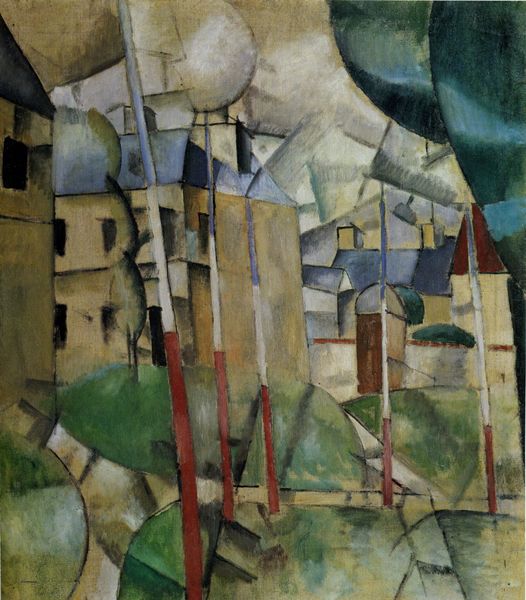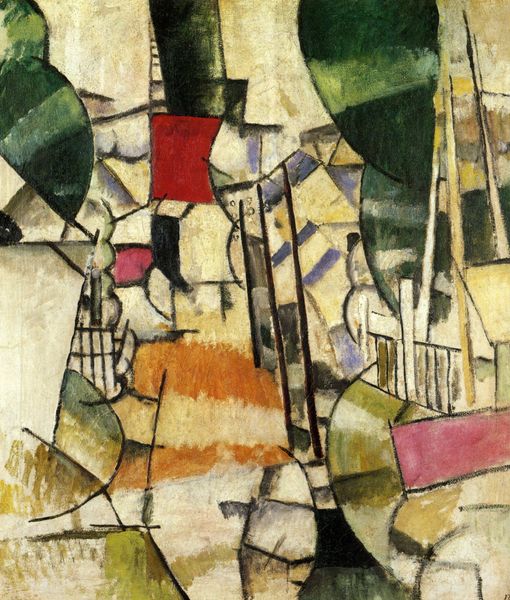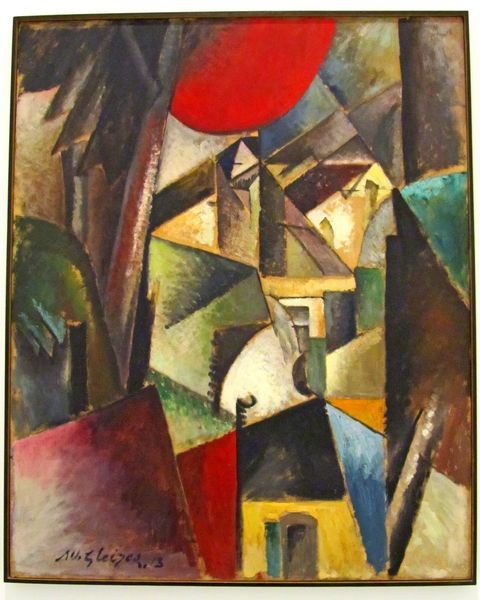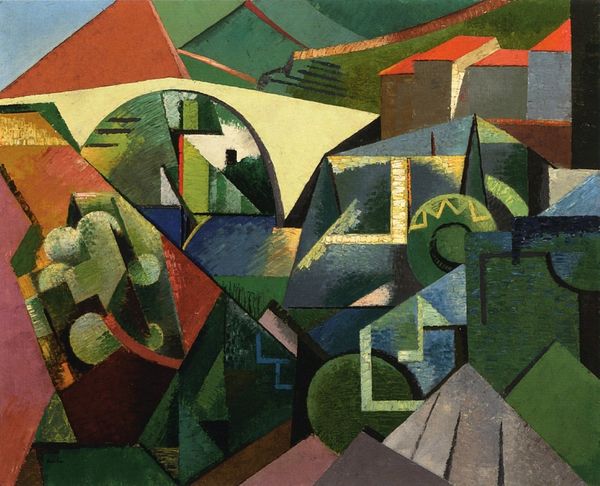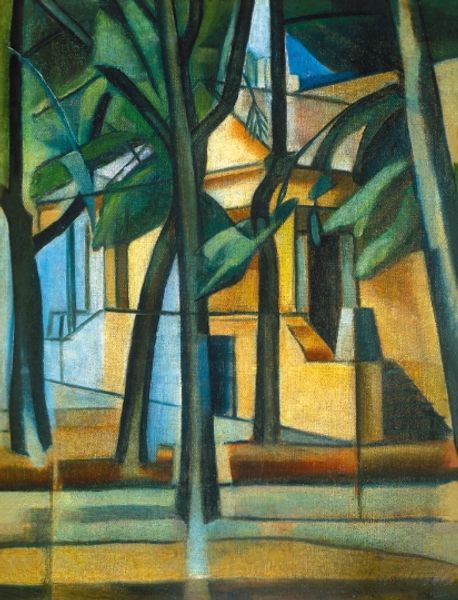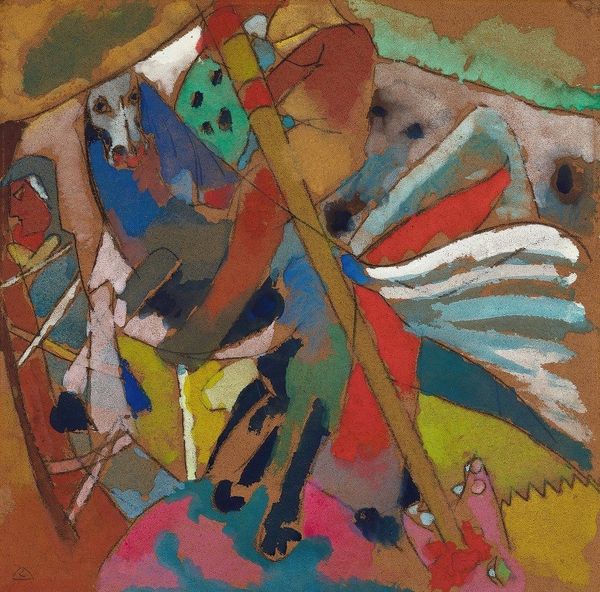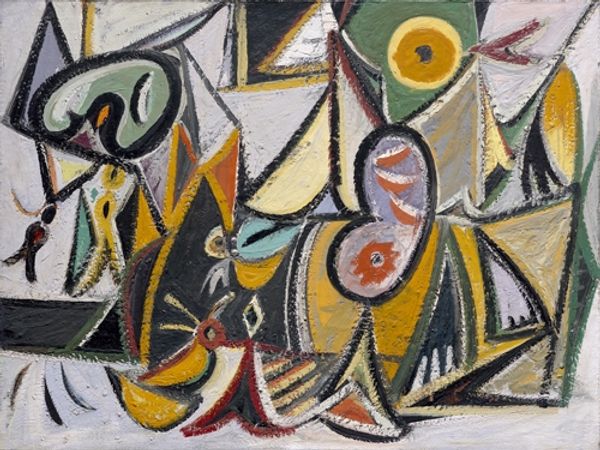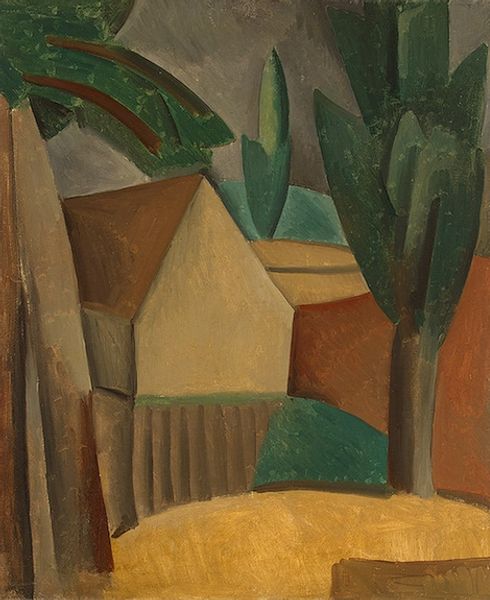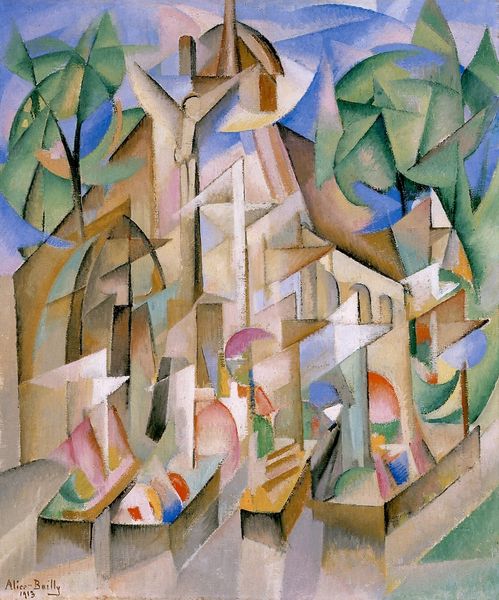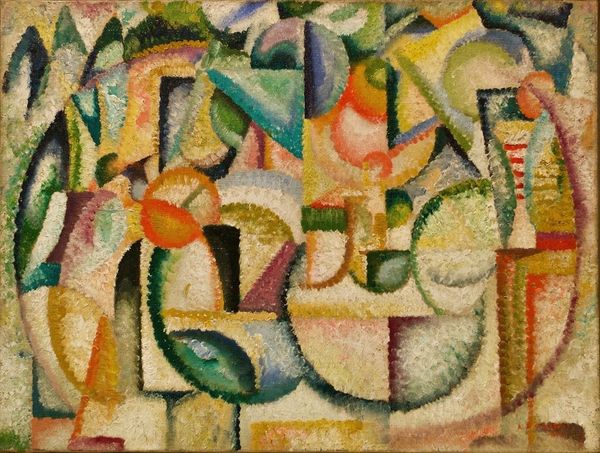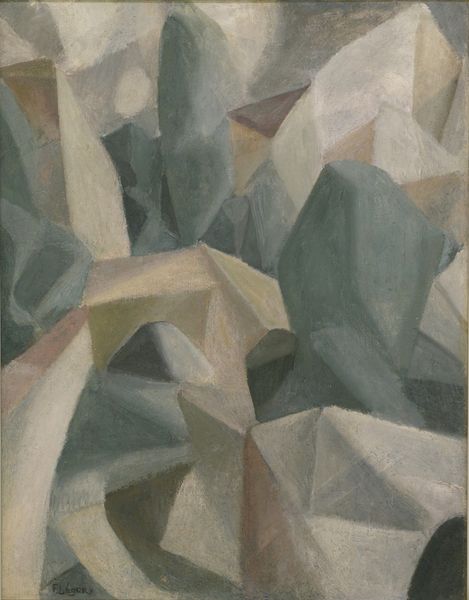
painting, oil-paint
#
cubism
#
abstract painting
#
painting
#
oil-paint
#
landscape
#
oil painting
#
geometric
#
modernism
Copyright: Albert Gleizes,Fair Use
Curator: Let’s take a closer look at this untitled painting by Albert Gleizes. He's well-known for his involvement with the Cubist movement, so you see some elements of geometric landscapes. Editor: My first thought? It feels… fractured. But also strangely comforting. Like looking at a dream of a familiar place through a kaleidoscope. Curator: Absolutely. Cubism was really trying to break down how we perceive the world. This piece is less about representation and more about presenting multiple viewpoints simultaneously. Gleizes, alongside artists like Picasso and Braque, sought to liberate painting from traditional perspective. Editor: Liberate is a strong word! I see it. The way he's flattened the space, the little hints of houses, trees, a possible boat in the distance—it’s like all these moments are layered on top of each other. Curator: And those overlapping planes really highlight the formal concerns of the painting—shape, line, and color become paramount. Gleizes’s commitment to geometric abstraction shows here. It is an interesting painting considering modernism, and landscapes' place within art's broader socio-political framework. Editor: Mmm, I guess I tend to respond more to the gut feeling it evokes, versus its history. It's got a gentle energy to it. It invites me in. There's a peacefulness. All the lines lead somewhere, like he's building paths. Curator: Gleizes, and others in his artistic circle, very much saw cubism as being analytical, rather than some emotional endeavor. How form itself shapes experience was key. They were trying to move painting beyond its historical association with pure mimesis. Editor: Perhaps. But you can't control how people will react, or rather feel about it. In the end, for me it evokes longing... distant and peaceful, you know? Curator: Yes, I see how a contemporary viewer might arrive at that emotive experience, which can open it to newer, more relevant cultural discussions, about belonging and place. Editor: Exactly! Who knew dissecting a landscape could lead us to a place of feelings?
Comments
No comments
Be the first to comment and join the conversation on the ultimate creative platform.
